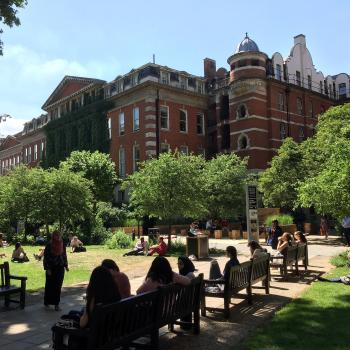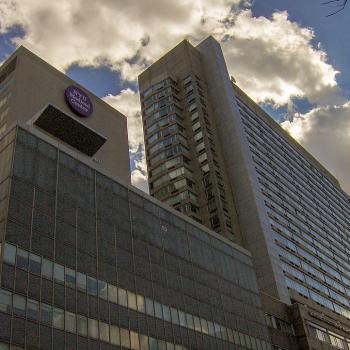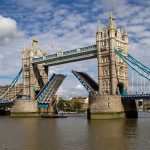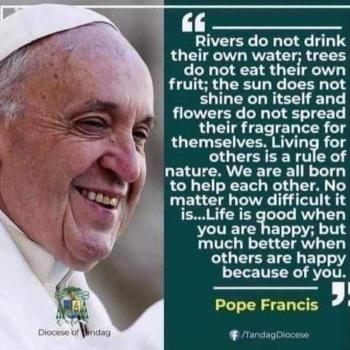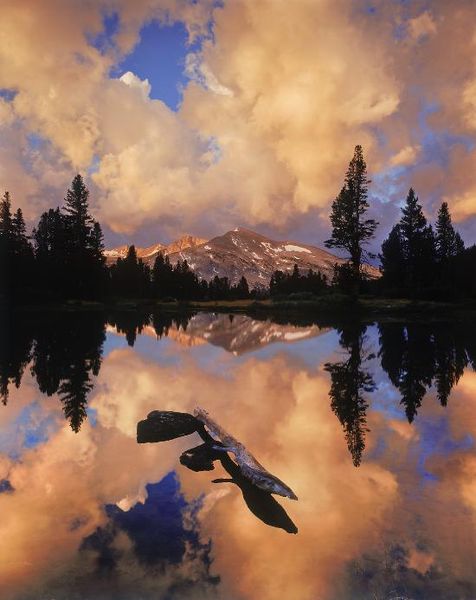
(Wikimedia Commons public domain image)
A few days ago, in an entry entitled “Are NDEs caused by oxygen deficiency in the brain? (Part 1),” I cited a passage from Pim van Lommel, Consciousness Beyond Life: The Science of the Near-Death Experience (New York: HarperCollins, 2010), that mentioned a phenomenon that Dr. van Lommel called “shared death experiences.” But no explanation of “shared death experiences” accompanied what I wrote, and some have wondered about what the term means.
So I draw again from Dr. van Lommel’s book:
An empathetic NDE, or “shared death experience,” . . . is not rooted in one’s own physical or psychological problems but is caused by the strong emotions felt upon the death of a dearly loved person. People share, as it were, in the death experience of another person who is dying or has just died. The content of this empathetic NDE is identical to that of a classic near-death experience. (41)
He then provides the account of a man who had been in a close relationship with a woman named Anne. She was suddenly killed in a traffic accident, and her seven-year-old son was fatally injured. He lingered, however, for five days before succumbing. She came from an extremely large family, and many of them were gathered at the hospital for the boy’s passing. Being merely the boyfriend of the child’s deceased mother, the narrator was standing at the back of the room by a window.
The moment he died, when his EEG flatlined, I “saw” that his mother came to collect him. You must bear in mind that she’d died five days earlier. There was this incredibly beautiful reunion. And at one point they reached out for me and included me in their embrace. This was an indescribable, ecstatic reunion. Part of me left my body and accompanied them to the light. I know this must sound very strange indeed, but I was fully conscious with Anne and her son as they went to the light, just as I was fully conscious and in the room where all the relatives were incredibly sad because their nephew and grandson had just died. And I joined them, we were heading toward the light, but at a certain point it was clear that I had to return, so I fell back. I simply fell back into my body. It was such an overwhelming experience, I glowed with happiness, but then I suddenly realized that I had a big smile on my face amid all these people who’d just lost a child dear to them. I quickly covered my face with my hands because I didn’t want to be disrespectful toward all these mourning and crying people in the room. And I never said a word about the experience. Talking about it seemed completely inappropriate at the time, and besides I didn’t have the words to describe what had happened to me. I used to think that I knew what was what. But my worldview underwent a radical transformation. (41-42)
Another account tells of a man — Dutch and resident in the Netherlands, I would guess — who traveled to New York to visit with his uncle there, who had developed terminal lung cancer. They spent a great deal of time talking. Then the narrator returned home and his mother, the dying man’s sister, went to New York in his stead. She spent day and night with her brother, the narrator’s uncle.
He was absolutely terrified. Afraid there would be nothing. He was alone when he died. He wanted it that way. Now for my experience, which took place a couple of hours after his death. I was asleep and “dreaming.” My uncle took me through a man-sized tunnel that opened out onto a beautiful landscape. A green meadow by a hill. A tree. A lake. All illuminated by a silvery sun. “I’m here now,” he said. And he looked extremely happy. (42)
In connection with the earlier post, Sam LeFevre kindly shared this interesting (and visually beautiful) link:
***
Oh well. Look on the bright side: An unusually large number of Utahns will likely soon be enjoying near-death experiences of their own, and perhaps even shared-death experiences:



